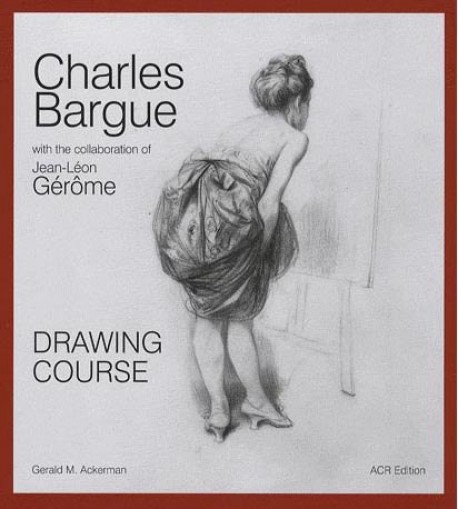Aucun produit
Produit ajouté au panier avec succès
Il y a 0 produits dans votre panier. Il y a 1 produit dans votre panier.
Références
- Nouveautés
- Catalogue d'exposition
- Sélection Fêtes
- Prix réduits
- Idées Cadeaux
- Editions Bilingues & inter.
- Livres d'art pour enfants
- Histoire de l'Art
- Peinture
- Architecture
- Sculpture
- Dessin Gravure
- Photographie
- Art contemporain
- Arts Décoratifs Design
- Techniques des Arts
- Critique
- Beaux livres
- Civilisations
- Revues partenaires

Drawing course - Charles Bargue with the collaboration of Jean-Léon Gérôme
The Bargue-Gérôme Drawing Course is a complete reprint of a famous, late nineteenth century drawing course. It contains a set of almost two hundred masterful lithographs of subjects for copying by drawing students before they attempt drawing from life or nature.
Produit indisponible
| Référence | 9782867702037 |
| Artiste-Genre | Charles Bargue and Jean-léon Gérôme |
| Editeur(s) | ACR |
| Format | Softcover |
| Nb. de pages | 336 |
| Langue | English |
| Dimensions | 275 x 250 |
| Technique(s) | 350 reproductions en couleur et en bichromie |
| Date parution | Reedition 2011 |
Consequently it is a book that will interest artists, art students, art historians, and lovers and collectors of drawings. It also introduces us to the work and life of a hitherto neglected master: Charles Bargue.
The Drawing Course consists of three sections. The first consists of plates drawn after casts, usually of antique examples. Different parts of the body are studied in order of difficulty, until full figures are presented. The second section pays homage to the western school of painting with lithographs after exemplary drawings by Renaissance and modern masters. The third part contains almost sixty académies or drawings after nude male models, all original inventions by Bargue, the lithographer.
With great care, the student is introduced to continually more difficult problems in the close observing and recording of nature. Practiced professional artists will see at once the problems of representation that are approached by Bargue, and they will delight in his solutions. Figure painters will copy the plates to keep in tune; so to speak, much as pianists practice the exercises of Czerny before performing Beethoven. Art students will find it a practical and progressive introduction to realistic figure drawing. Art historians can learn by studying these drawings just what was prized in late 19th century figure painting. They will recognize the reliance upon tradition by the use of antique sculptures as models in the first part: Antiquity is here used, not to impose a classical style, but as an aid in seeing the structure of the human body with clarity and intelligence. The result is a convergence of Classicism and Realism. There are no numerical proportional charts, perspective boxes or geometrical schemata to memorize.
Charles Bargue started his career as a lithographer of drawings by hack artists for a popular market in comic, sentimental and soft-porn subjects. By working with Gérôme, and in preparing the plates for the course, Bargue was transformed into a spectacular painter of single figures and intimate scenes; a master of precious details that always remain observation and never became self-conscious virtuosity, of color schemes that unified his composition in exquisite tonal harmonies. The last part of the book is a biography of Bargue, along with a preliminary catalogue of his paintings, accompanied by reproductions of all that have been found and of many of those lost.
Produits déjà vus






